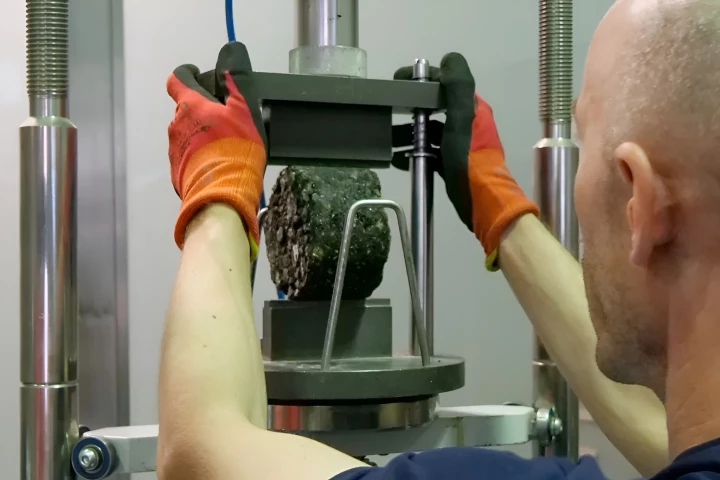Materials
-
Spots and stripes serve many purposes in nature, but how they form has been more of a mystery. Now, researchers have advanced their breakthrough theory – and it could help us design materials that can respond to the environment and change color on demand.
-
We think of ice as just frozen water. It is simple, solid. But water is a master of disguise. With just two atoms, hydrogen and oxygen, it can freeze into more than 20 different types of ice. Now, scientists have discovered a new, stranger type of ice.
-
Scientists have been working on enhancing concrete to store energy. That includes researchers at MIT, who found a way to combine cement, water, and carbon black to create a 'supercapacitor' for this purpose back in 2023. It's now 10x better at this.
-
Back in 1954, archaeologists uncovered a hidden shrine deep beneath a Greek settlement. Inside, they found bronze jars holding a waxy, scented paste. Sealed with cork and marked with traces on their surfaces, the vessels held a sticky secret.
-
While we're used to seeing cigarette butts littering public roads, such butts may soon be making their way into those roads, strengthening them in the process. It's all part of a recycling effort, which should also reduce the need for road repairs.
-
If an object that's composed of two types of material is going to fail, the break will usually occur at the interface where the two meet. A new type of light-activated 3D printing resin addresses that problem, by gradually morphing from hard to soft states within a single object.
-
A platinum fiddle that's just 35 microns in length and 13 microns in width is believed to be the world's smallest violin, measuring just a fraction of a microscopic tardigrade. But before you get too excited, there's one little twist …
-
A Maryland-based startup is set to begin mass producing Superwood, which is made from regular timber using a densification process, and exhibits strength greater than that of steel.
-
Researchers have genetically modified spiders for the first time using the CRISPR gene-editing process. Adding a single gene to unfertilized eggs resulted in the creation of a spider that could produce red, fluorescent silk.
-
As much as wind turbines are great for producing clean energy, disposing of them when the time comes can be challenging. Researchers in China have hit upon a clever way to use discarded blades to build long-lasting roads.
-
A reusable formwork design for molding concrete into vaulted floors using sophisticated structural geometry uses 60% less concrete and 90% less steel compared to traditional methods. It's also inexpensive and doesn't require special skills.
-
Scientists have accidentally discovered a particle that has mass when traveling in one direction, but no mass while moving in a different direction. Known as semi-Dirac fermions, particles with this bizarre behavior were first predicted 16 years ago.
Load More











